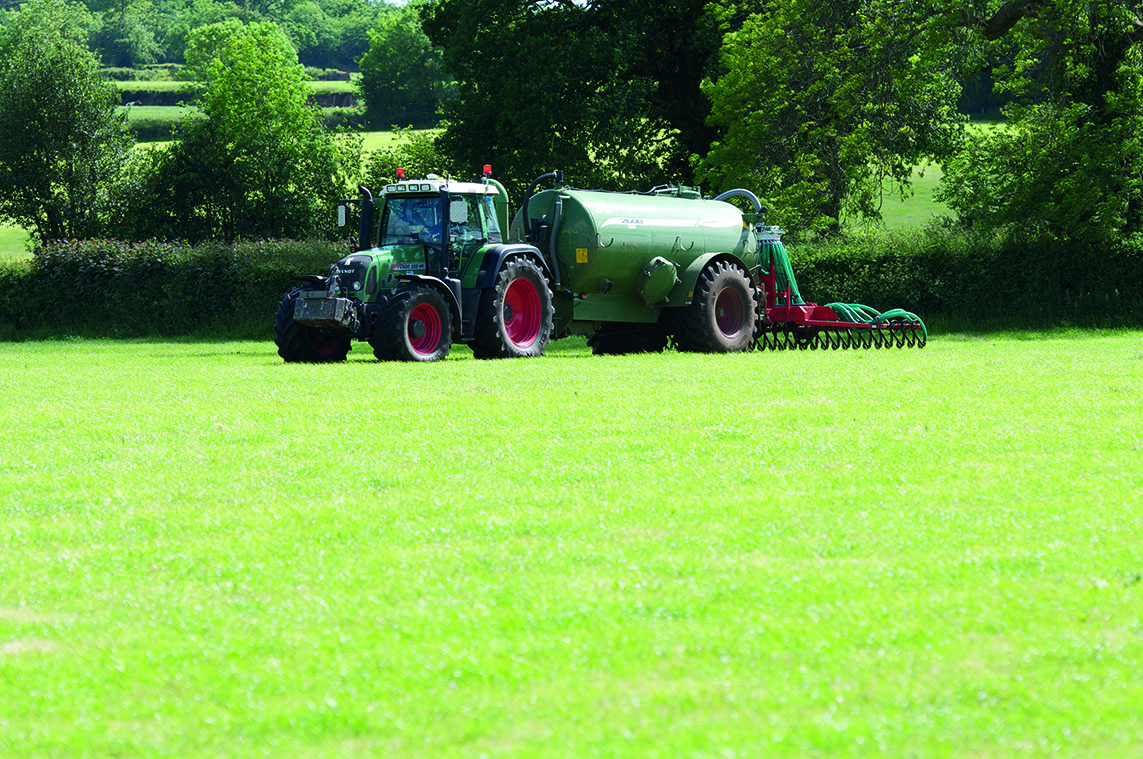Slurry has long been a valuable resource but, with fertiliser costs continuing to rise, making the most of your slurry is even more important this year. It’s time to set your fertiliser plan, use your slurry effectively and gain the most from its nutrients.
Start planning now
Any fertiliser plan starts with a soil analysis to understand the current status of your soil. This shows you which fields will benefit most from the application of slurry and where there are opportunities to reduce the use of chemical fertiliser later in the year.
Understand the value of your slurry
The nutrient content of slurry can vary substantially between farming systems, livestock and your type of storage tank. So, testing your slurry can help you understand what you have and how to gain the most from it.
Most of slurry’s value lies in its P and K content and, therefore, is best used on fields with low P and K indices. It’s also particularly valuable for silage fields, where it can make a substantial contribution to the K requirements of a silage crop. So, if you do have slurry with fluctuating nutrient levels, use the highest quality on fields planned for silage. If your tank is covered, the slurry has a higher dry matter content, and thus more P and K, so should be targeted towards silage fields.
The right time to apply slurry
The timing of slurry applications is crucial, so wait for the right conditions. Trafficability needs to be good, soil temperatures above 6°C and a clear forecast for the week ahead – don’t spread when rain is forecast. The nitrogen in slurry is more available in spring compared to summer, so target spring slurry applications to silage fields followed by grazing fields with low covers.

Use an efficient application method
How you apply slurry also makes a difference. 'Low emissions slurry spreading’ (LESS) methods include a dribble bar or trailing shoe. These not only reduce the loss of ammonia to the atmosphere but, thanks to the precise nature of application, can also increase nutrient use. Research has shown using a trailing shoe can increase N utilisation by up to 25% compared to a conventional splash plate, which reduces the need for chemical fertiliser. Using a LESS method also allows you to apply slurry to heavier grass covers and over a wider time period, meaning a quicker return of grazing livestock.
What to remember when applying slurry
This is a checklist to consider before you start to apply slurry:
- Always check the closed period dates and restrictions for slurry application.
- Never spread slurry near watercourses and always abide by buffer zones. Do not apply within:
- 5m of surface waters (extending to 10m in the first two and last two weeks of the spreading season)
- 10m of surface waters where the slope towards water exceeds 10%
- 15m of exposed cavernous or karst features, such as swallow holes and exposed rock
- 20m of a lake shoreline
- 25-200m of a water abstraction point for human consumption (Ref: Teagasc Riparian Buffer Zones)
- Avoid applying slurry if the land is waterlogged, the soil temperature is below 6°C or heavy rain is forecast.
- Target fields where slurry applications can have the greatest effect.
- Use a LESS application method for both environmental and production benefits.
When preparing to set your fertiliser plan, remember to perform a soil test.
Germinal is here to advise on any of your Irish grass seed requirements.
